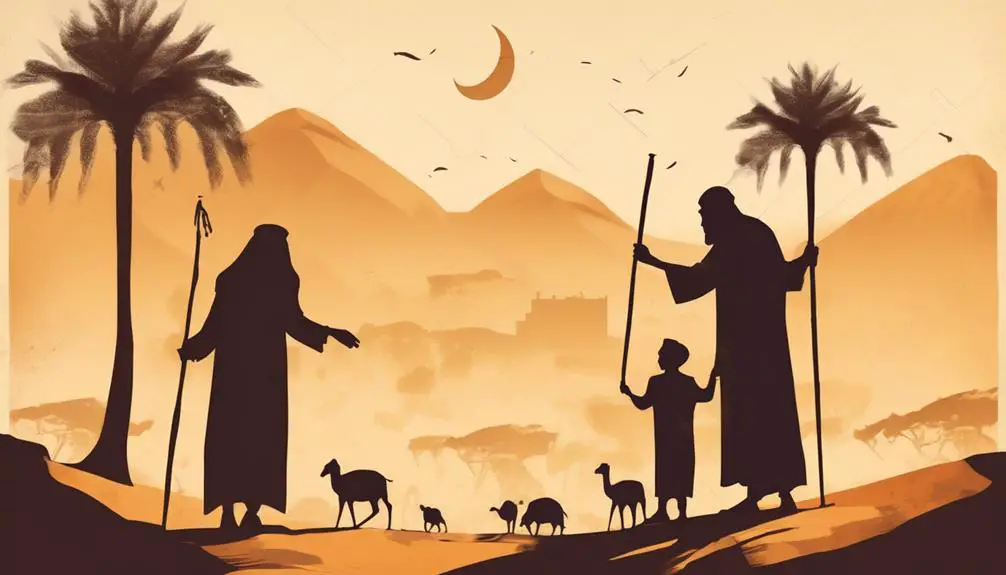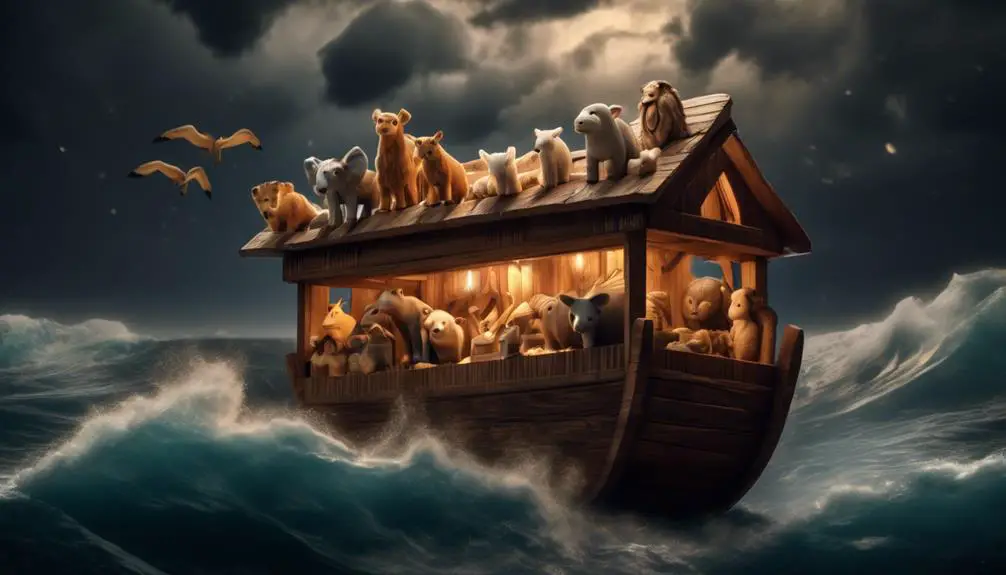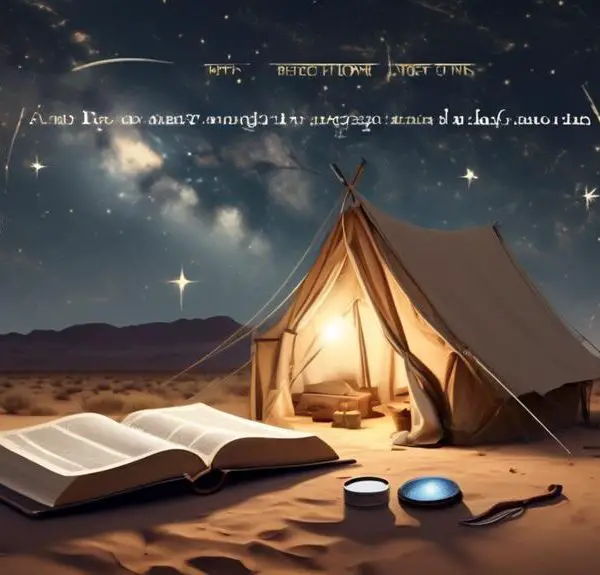Fathom the mysteries of Noah's ark in this insightful Bible study, diving deep into faith, obedience, and survival in a world reborn.

Bible Study – Learning About Noah
Have you ever questioned the validity of the biblical tale of Noah? You’re certainly not alone in your curiosity. This biblical narrative, steeped in mystery and miracle, has invited both skepticism and belief over centuries.
In our exploration, we’ll dissect the details of Noah’s life, his divine mission, and the implications of his actions. We’ll wrestle with questions of faith, obedience, and survival, culminating in a comprehensive understanding of this ancient text.
But what could the story of a man, an ark, and an incredible flood possibly teach us in the present day? Well, let’s find out.
Key Takeaways
- Noah came from a righteous lineage and was chosen by God to build an ark.
- The divine command to build the ark was a test of faith, obedience, and resilience.
- Building the ark presented various challenges, but Noah overcame them through meticulous planning and execution.
- Life aboard the ark required resilience, resourcefulness, and care for all creatures.
Noah’s Background and Family

Diving into the depths of Noah’s background and family, you’ll discover a rich tapestry of genealogical details intricately woven into the early chapters of the Bible. Noah’s ancestry, a compelling aspect of the Genesis narrative, is a profound study in itself. Born to Lamech and presumably one of his wives, Noah stands as the tenth patriarch in the line descending from Adam, through Seth.
Now, you might wonder, why is Noah’s family lineage significant? Well, it’s because Noah’s line was seen as righteous – a beacon of hope in a world that had strayed from God’s path. In Genesis 6:9, Noah is described as a ‘just man and perfect in his generations’. This phrase suggests a moral distinction, setting Noah and his line apart from the rest of humanity who’d succumbed to wickedness.
Expanding on Noah’s immediate family, you’ll find he’d three sons – Shem, Ham, and Japheth. These sons and their wives become the progenitors of all the post-flood humanity. Their lineage, as detailed in Genesis 10, also known as the ‘Table of Nations’, provides a genealogical overview of the ancient world’s tribes and nations.
Understanding the Divine Command

Grasping God’s divine command to Noah is essential in understanding the narrative’s pivotal turning point, where Noah’s faith and obedience are tested to their limits. The command interpretation isn’t a mere literal reading, but a profound insight into the divine motivation behind the directive.
This command, given in Genesis 6:14-22, instructed Noah to build an ark in preparation for a global flood. It was a divine mandate, requiring absolute faith and obedience from Noah. In interpreting this command, you must also comprehend the divine motivation. God’s motivation wasn’t arbitrary, but a response to the corruption and wickedness dominating the earth. He decided to purge it and start anew with a righteous man, Noah, and his family.
God’s command was specific. He provided Noah with detailed instructions concerning the ark’s construction, including its dimensions, materials, design, and capacity. This specificity underscores God’s foreknowledge and omnipotence, as well as Noah’s obedience in following the divine blueprint precisely.
The command also included God’s covenant with Noah. This covenant, a divine promise of protection and salvation, was contingent upon Noah’s obedience. It underscores the theme of divine justice balanced with mercy in the narrative.
In essence, God’s command to Noah was a test of faith, obedience, and resilience. It was a divine intervention aimed at preserving righteousness amidst prevailing wickedness. Understanding this command helps you appreciate the depth of Noah’s faith, his obedience despite the daunting task, and the divine motivation for such a drastic measure. It also provides a broader perspective on God’s interaction with humanity, revealing His justice, mercy, and commitment to righteousness.
Building the Ark: Challenges and Triumphs

Next, we’ll delve into the herculean task of building the ark, a feat that presented Noah with a series of challenges and triumphs, testing his resolve, ingenuity, and unwavering faith. The Ark Construction was an endeavor of biblical proportions, literally and figuratively.
Material Sourcing was one of the significant challenges Noah faced. Given the ark’s colossal size – three hundred cubits long, fifty wide, and thirty high – immense quantities of gopher wood and pitch were required. Locating and procuring these materials, in an era devoid of modern tools or transportation, would have been a daunting task. Yet, Noah surmounted this hurdle with unwavering faith and steadfast determination.
The Ark Construction itself, with its three decks and a roof, was a triumph of ancient engineering. The ark’s design, while simple, required meticulous planning and execution. Each plank had to be cut, shaped, and fitted together flawlessly. Adding to the complexity was the need to make the ark seaworthy, capable of withstanding the catastrophic flood. This required the application of pitch inside and out, creating a waterproof seal.
Overcoming these challenges, Noah successfully constructed the ark, a testament to his obedience and faith. The triumphant completion of the ark didn’t just symbolize Noah’s obedience to God; it also marked a triumph of human resilience, resourcefulness, and ingenuity.
Life Aboard the Ark

Having navigated the trials of ark construction, let’s now turn our attention to the experiences and challenges of life within this colossal vessel. A critical aspect of the Noahic narrative revolves around Ark Nutrition and Animal Management, two components vital to the survival of Noah’s family and the diverse menagerie of creatures on board.
Analyzing Ark Nutrition, it’s essential to understand that this entailed more than mere sustenance. Given the variety of species aboard, the dietary requirements would have been vast and varied. Carnivores, herbivores, and omnivores all needed appropriate, nutritionally-balanced diets to ensure their survival and health. Preserving and storing enough food to last the duration of the flood challenged Noah’s logistical capabilities.
Turning to Animal Management, the text suggests an extraordinary feat of organization and caretaking. The sheer diversity of species required different habitats, feeding schedules, and levels of interaction. Noah and his family would have needed to establish routines for feeding, cleaning, and taking care of the health of these animals. This required an intricate understanding of each species’ needs and behaviors, and a meticulous system to ensure no animal was neglected.
Life aboard the ark wasn’t just about survival, but also maintaining the balance of nature within a confined space. It was a task that demanded resilience, resourcefulness, and an unwavering commitment to the preservation of life. The narrative of Noah’s ark, therefore, isn’t only a testament to faith and obedience but also to the triumph of stewardship and care for all of God’s creation.
Lessons From Noah’s Story

While the story of Noah’s ark is a captivating tale of survival, it also provides profound lessons that resonate with our contemporary global challenges, inviting us to reflect on our role as stewards of the earth. The narrative highlights Noah’s patience and faith’s resilience, showcasing virtues that are rarely found in our fast-paced, instant-gratification society.
Noah’s patience is a central theme in the story. Faced with a daunting task of building an ark and enduring the ridicule of his community, Noah persevered. The construction of the ark took decades, but Noah’s steadfastness in the face of adversity exemplifies the virtue of patience. It’s a reminder to us that achieving worthwhile goals often requires time, perseverance, and an unwavering belief in the validity of our pursuits.
The story also underscores the resilience of faith. Noah’s faith was tested on multiple occasions, yet he remained unshaken. He trusted God’s instructions, despite the seeming impossibility and absurdity of the impending flood. In a world filled with skepticism and doubt, Noah’s unyielding faith provides a model of spiritual resilience. It encourages us to hold firm to our beliefs, even when circumstances seem insurmountable.
On a larger scale, the story of Noah prompts a reflection on our responsibility to the earth. Noah sought to preserve life amidst destruction, a lesson that resonates with our current environmental concerns. It’s a call for us to be mindful stewards, ensuring the survival and prosperity of our planet for future generations.
This biblical narrative, thus, offers timeless wisdom, encouraging patience, resilience, faith, and environmental stewardship.
Conclusion
In studying Noah’s journey, you’ve delved into his family, divine commands, and ark construction. You’ve experienced life aboard the ark and deciphered lessons from his story.
Noah’s faith, obedience, and resilience under pressure offer profound insights. His story serves as a timeless reminder that unwavering faith can lead to salvation, even amidst life’s greatest storms.
As you further your biblical studies, let Noah’s story inspire you to navigate life’s challenges with faith and courage.



Sign up